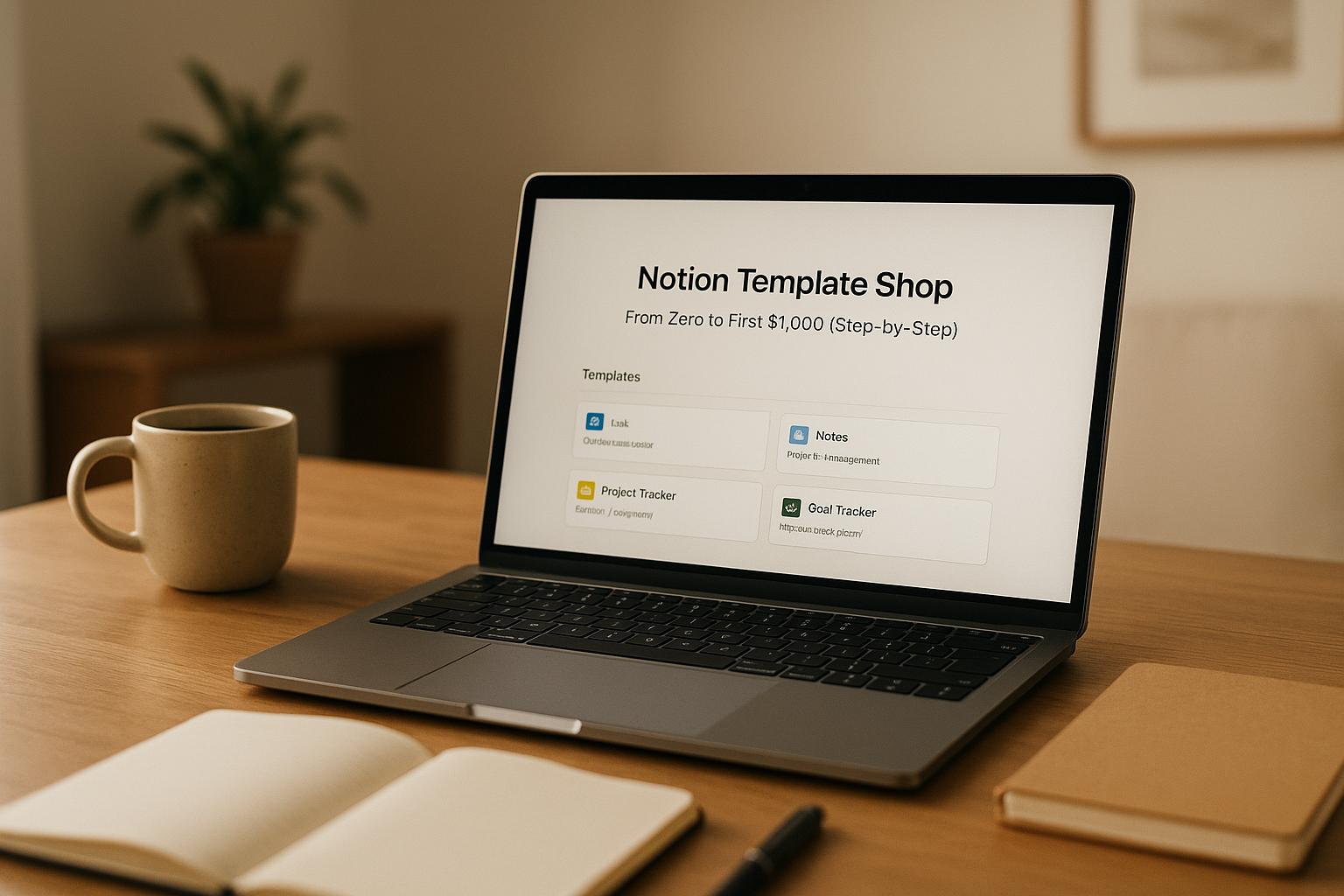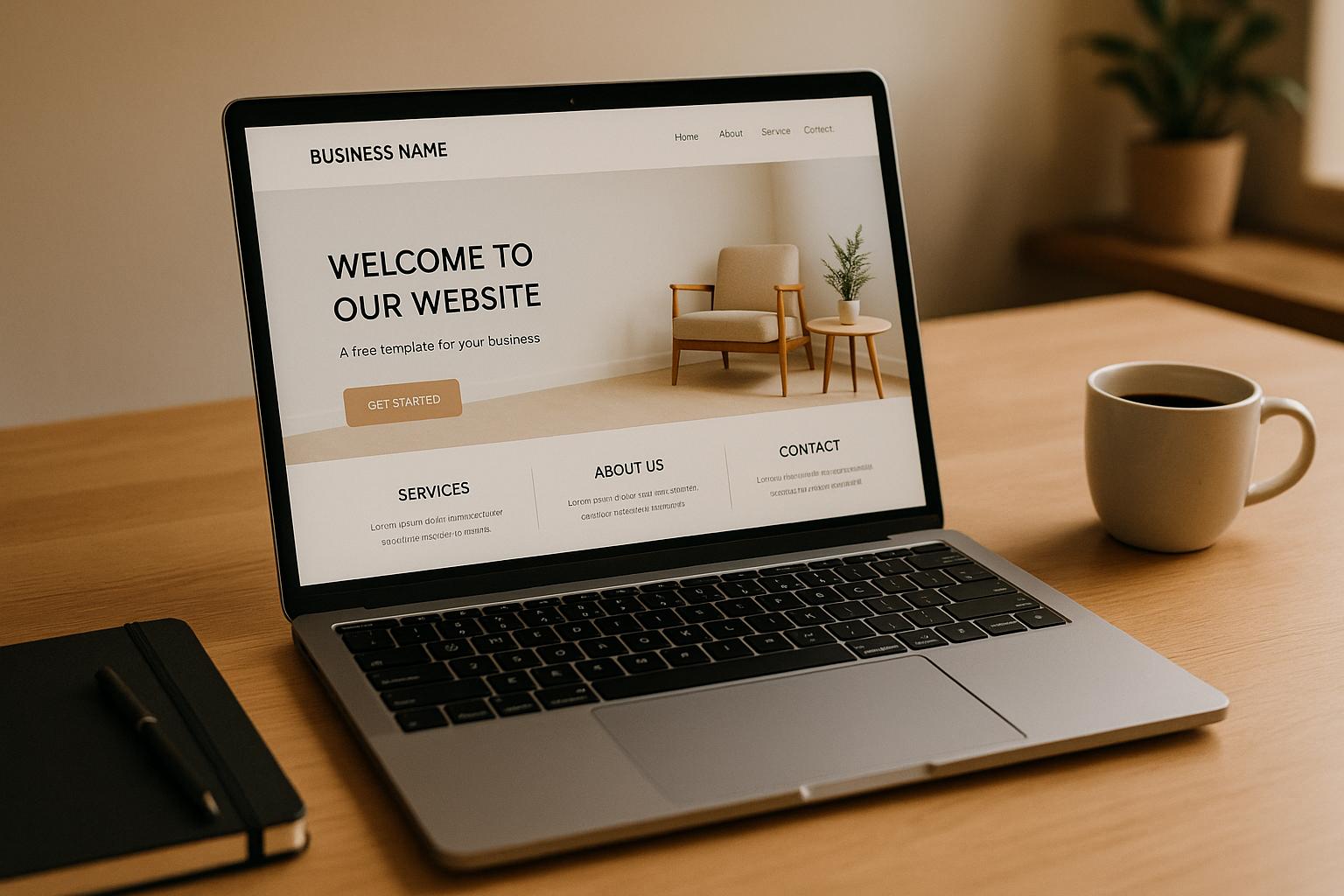
You can start a successful business with just $200 by focusing on three key steps:
- Test Your Idea: Use AI tools to validate your business concept. Analyze market size, customer needs, revenue potential, and competitors. Adjust your idea based on feedback.
- Spend Wisely: Allocate your $200 budget carefully. Prioritize essentials like business filing, domain registration, and affordable marketing tools.
- Grow Methodically: Reinvest profits into marketing, product development, and automation. Track key metrics like customer acquisition cost and revenue growth to scale effectively.
Quick Start Breakdown:
- Use free or low-cost tools like Canva and Figma for branding and marketing.
- Market your business through social media, email campaigns, and referrals without overspending.
- Focus on steady growth by reinvesting profits strategically and automating repetitive tasks.
With these steps, you can minimize risks, maximize resources, and build a thriving business from a small investment.
How to Start a $100k/yr Business for Only $200 TODAY
Step 1: Test Your Business Idea
Before diving in and spending money, especially when starting with just $200, you need to test your business idea. AI tools can help you validate your concept quickly and effectively.
Use AI Tools for Market Testing
Platforms like IdeaFloat make it easy to evaluate your idea in record time. For example, their Validate Score feature examines your concept through multiple angles, identifying areas that need improvement.
Here are key metrics to focus on:
- Market size: Understand how large your target audience is.
- Customer pain points: Identify specific problems your product or service solves.
- Revenue potential: Estimate how much money your idea could generate.
- Competitive landscape: Analyze existing competitors and their strengths.
Using this data, I was able to adjust my pricing strategy and fine-tune my market approach.
Conduct Affordable Market Research
Social media platforms, online communities, and tools like IdeaFloat’s Real Customer Insights are goldmines for low-cost market research. I used these resources to gather essential data about my audience and their preferences.
"AI validation is a game-changer in business decision-making. It crunches massive data sets fast and accurately, cutting down human error. But remember, you'll still need human oversight for the final say." - Nerdynav
These insights helped me tweak my concept to better align with what the market actually wanted.
Refine Your Idea
Flexibility and feedback are key to success. As Hannah Wright, Founder of SaaS Design, explains: "You need to hear exactly why people don't think your product is good enough in order for you to make improvements and create something that people will love."
Using IdeaFloat’s SWOT Analysis Generator, I identified three critical areas to improve:
- Product Features: Customers wanted more automation, so I prioritized developing those features.
- Pricing: Research showed that people were willing to pay more for highly targeted solutions.
- Distribution: I discovered untapped channels that could expand my reach.
It’s important to note that about 20% of new businesses fail within their first two years. Companies like Stitch Fix show how AI can help avoid this. They use advanced algorithms to predict fashion trends and make smarter inventory decisions.
This testing phase, which lasted just three weeks, saved me from wasting months and potentially thousands of dollars on the wrong approach. It became the cornerstone of my low-budget startup plan.
Step 2: Start With $200
Once you've validated your idea, it's time to put your $200 to work wisely.
Create Your First Product
Use AI tools to keep product development costs low. For example, IdeaFloat's Business Summary Generator helps define your product, while their Product List tool helps structure your initial catalog.
For design, take advantage of free tools like:
- Canva (free version) for creating marketing materials
- Figma (free plan) for prototypes
- IdeaFloat's AI Logo Generator for branding
"With Canva it feels like we have a team of 50 designers instead of only five." - Molly Martin, Art Director
Keep Startup Costs Low
"What is the minimal amount of capital I need to get this off the ground?" - Patrick Frank
Here’s how to break down your $200 budget:
| Expense Category | Cost | Suggested Tools/Services |
|---|---|---|
| Business Filing | $50 | DIY registration |
| Domain & Email | $15 | Annual domain registration |
| Basic Branding | $35 | Logo and templates |
| SaaS Tools | $100 | Essential software subscriptions |
Stretch your budget further by:
- Filing business paperwork on your own
- Starting with a simple landing page instead of a full website
- Taking advantage of free software trials
- Subscribing only to essential tools
Once you've trimmed unnecessary expenses, focus on affordable digital marketing strategies.
Market Without Spending Big
Since 81% of people research online before buying, prioritize free digital marketing tactics:
- Create Informative Content: Write blog posts and social media updates to attract organic traffic.
- Try Email Marketing: Build an email list through your landing page - email campaigns can deliver a 400% ROI.
- Encourage Referrals: Set up a basic referral program. Referred customers are four times more likely to buy.
Engage in online communities where your audience spends time. Share advice and insights in discussions without pushing for sales.
sbb-itb-08dd11e
Step 3: Grow to 6 Figures
Focus on What Drives Growth
To grow your business, you need to identify what’s fueling your progress. Track key metrics to understand both your strengths and areas where you can improve. Here's a breakdown:
| Metric | Measurement | Why It Matters |
|---|---|---|
| Customer Acquisition Cost | Marketing spend ÷ New customers | Helps you evaluate profitability |
| Customer Lifetime Value | Average purchase × Frequency × Retention | Highlights your most loyal and high-value customers |
| Conversion Rate | Sales ÷ Leads | Shows how effective your marketing efforts are |
| Monthly Revenue Growth | Month-over-month increase | Measures how well your business is scaling |
Set clear, revenue-driven goals to guide your efforts. For example, when Spotify worked with Mailchimp in March 2023 to clean up their email list, they slashed their bounce rate from 12.3% to 2.1% in just 60 days. This improvement boosted deliverability by 34% and resulted in an additional $2.3M in revenue (source: Mailchimp Case Studies, 2023). Use examples like this to decide how to reinvest profits for maximum impact.
Reinvest Your Profits Smartly
Allocate 20%-70% of your profits back into your business in areas like marketing, technology, product development, and team expansion.
"Reinvesting profits allows businesses to expand their operations, reduce costs and build a strong financial foundation"
It’s also a good idea to set aside funds for unexpected opportunities or challenges. Work with a professional accountant to fine-tune your reinvestment strategy while staying compliant with tax laws. Once you've reinvested, focus on streamlining your operations to handle growth efficiently.
Simplify Your Workload
Scaling a business can be overwhelming, but automation tools can make it manageable. Use tools like IdeaFloat to handle repetitive tasks and free up your time for strategic decisions. For example, you can use:
- Business Summary Generator to update your growth strategy
- Finance Structure Planning to organize your scaling efforts
- Product List Tool to explore new offerings
"I consider my business to be very data driven, which is a funny thing to say as an artist. In the end, I have more time to create music because the backend is so efficient and lean." – SYML, Musician
Map out your workflows, address bottlenecks, and automate tasks like invoicing and inventory management. Remember, scaling isn’t something you do once and forget - it’s an ongoing process. As the GoDaddy Blog puts it:
"There is one noteworthy difference between launching something and growing it: Launching something is a project, while growing it is a process (or, more precisely, a set of processes)"
What Works and What Doesn't
Common Mistakes to Avoid
Launching a $200 startup requires careful planning to steer clear of costly missteps. Statistics show that over 18% of new businesses fail within their first two years, often due to avoidable mistakes. Here are some key errors and how to address them:
| Mistake | Impact | Solution |
|---|---|---|
| Lack of Planning | Wastes limited resources | Draft a simple one-page business plan |
| Poor Financial Management | Leads to cash flow issues | Track expenses and organize finances |
| Premature Hiring | Depletes capital reserves | Use contractors until hiring is essential |
| Rapid Expansion | Causes financial strain | Scale only when demand is proven |
| Ignoring Customer Feedback | Misaligns with market needs | Regularly act on customer input |
"Too many businesses start without a basic plan, and if you fail to plan, you are essentially planning to fail. A startup should map out a business plan, even if it is just one page. It should include how much it costs to operate, how much they anticipate selling, who would buy their product and why."
– Deacon Hayes, founder, Well Kept Wallet
By steering clear of these errors, you can set a strong foundation for making smarter adjustments as your business grows.
Changes That Worked
Learning from early mistakes often leads to breakthroughs. In 2020, Kirstie Wang made a strategic decision to focus on Instagram Stories, which caused her engagement to more than triple. Remarkably, 96% of her website traffic came from Instagram alone. This highlights how concentrating on one effective marketing channel can significantly boost growth.
"Building a company is a marathon, not a sprint, and setting realistic and strategic goals with a long-game vision has been key for me."
– Kirstie Wang, Founder of A Jar of Pickles
Kirstie also expanded her product line to include enamel pins, keychains, and washi tape. These changes nearly tripled her revenue, and her reorder rate hit an impressive 52%, showing strong customer loyalty. These shifts not only addressed initial challenges but also provided practical insights for running a lean and efficient business.
Tips for New Business Owners
Practical strategies can help you build a solid foundation for your business. Here are a few actionable tips:
-
Start With Customer Validation
Use tools like IdeaFloat's Customer Profiling feature to identify your target audience before committing to inventory or marketing expenses. -
Focus on Steady Growth
Avoid rushing into decisions that could lead to burnout or overspending. Take a measured approach to scaling your business.
"It can feel like everything needs to happen so fast when you're building a business, but that can quickly lead to burnout, high spending you can't keep up with, and generally feeling overwhelmed."
– Kirstie Wang, Founder of A Jar of Pickles
- Leverage Affordable Marketing
Choose one platform to engage with customers consistently, without needing a large budget.
It’s worth noting that half of all businesses in the US operate from home. This proves you don’t need expensive office space to succeed. Focus on profitability and smart decision-making at every step.
Conclusion
Building a six-figure business from just $200 is possible with the right approach and tools. Mud/Wtr's journey from a $200 startup to a $100M company shows how understanding the market and making smart decisions can lead to impressive growth.
Efficient validation and execution, powered by tools like IdeaFloat, can save time and provide actionable insights. Nick Sherwing's success with woohoPets highlights how AI-driven tools can transform months of research into quick, impactful results.
The process can be broken into three key phases:
| Phase | Key Focus | Outcome |
|---|---|---|
| Validation | Market Testing | Reduces risk of product-market fit issues |
| Launch | Managing Costs | Conserves resources for scaling |
| Growth | Strategic Spending | Boosts potential for expansion |
These phases outline a clear path from testing your idea to achieving solid business growth.
"Almost everyone has an idea for an app, but most people never act on their idea. This is unfortunate because there are a lot of great ideas out there that could empower, entertain or educate millions of people." - Carter Thomas
Continuous improvement is key to success. Bernie Fitzsimon, Managing Director at LighthouseHQ, emphasizes the value of using tools like IdeaFloat:
"Any existing business that is considering scaling up or changing direction should be using IdeaFloat. It is an incredibly powerful tool"
Success isn't about having endless resources - it's about making the most of what you have. Use these strategies to turn a small investment into a thriving business.
Related Blog Posts
Get the newest tips and tricks of starting your business!


